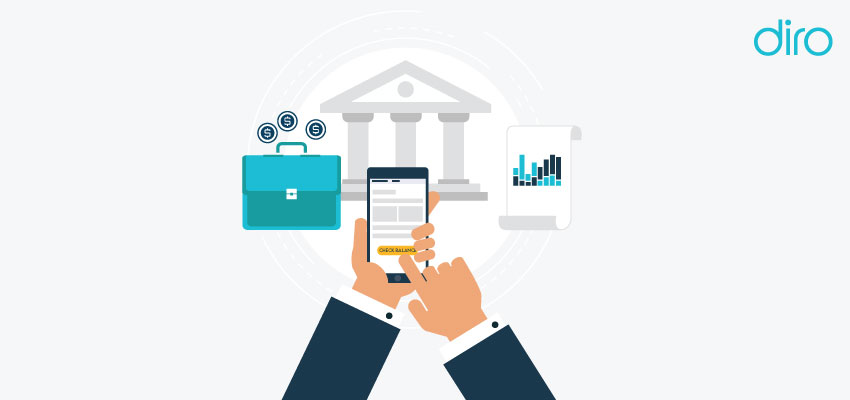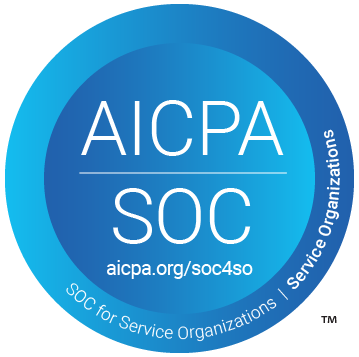Auditors, compliance teams, and financial controllers have one common challenge: how to validate balances and transactions without drowning in manual work. Traditional methods like requesting PDFs, cross-checking statements, and relying on scanned images are slow, error-prone, and open to manipulation. That’s why most businesses are moving towards automated balance and transaction verification. It has quickly become a core piece of modern audit workflows.
In this guide, we’ll break down what balance and transaction verification are, why they matter, the use cases they solve, and more. Let’s dive in.
What is Balance & Transaction Verification?
Balance and Transaction verification is a process that helps businesses tackle financial fraud. At its core, balance verification means confirming the account balance as reported by a client, business, or financial institution. In most situations, the confirmation happens by verifying the information from the source.
Transaction verification includes verifying details of a transaction (or multiple transactions). The specific information verified can include data, amount, sender/receiver, and whether the transactions were processed. This helps businesses capture fake or altered bank statements, missing information, or tampered submissions.
Verifying balance and transactions has multiple benefits for businesses.
Benefits of Balance & Transaction Verification for Businesses
Verifying balance & transactions is crucial for businesses to maintain their financial integrity and weed out any suspicious activities. Most common benefits include:
- Fraud-prevention – Prevents risk of fraud as PDFs (bank statements and screenshots) are easy to manipulate. Verifying information directly from the source minimizes the risk of fake data being accepted as the truth.
- Compliance – Regulators expect banks, auditors, and FinTechs to prove that financial records are backed by verifiable data. Having a balance & transaction verification workflow means businesses are complying with local regulations.
- A workflow accelerator – Automated balance & transaction verification confirmation solutions like DIRO balance confirmation reduce the time required for manual verifications. Businesses no longer have to chase clients for copies of statements, then cross-check line items manually.
Instead of relying on documents that can be forged, automated systems connect directly to banks or financial institutions. They use APIs or secure integrations to pull verified balances and transaction histories in real time.
Why Balance & Transaction Verification Matters
Balance & Transaction verification becomes really important for businesses in highly regulated industries. Here’s why it matters:
- Accuracy at scale: Auditors are expected to deliver high assurance on massive transaction volumes. Manual sampling doesn’t cut it anymore.
- Fraud reduction: Fraudsters are smarter than template-matching tools. They edit PDFs, forge statements, and exploit weak verification checks. Automated verification stops that loophole.
- Operational efficiency: For firms handling multiple audits in parallel, eliminating repetitive document chasing saves hundreds of hours annually.
The value is simple: integrating transaction verification makes audits faster, more reliable, and less of a logistical nightmare.
How Balance & Transaction Verification Helps with Compliance?
Verifying information and not just believing what the customer has to say is the first step in securing businesses. Businesses with proper workflows for verification have a higher chance of staying secure and avoiding non-compliance fines.
Having a balance and transaction verification framework in place can support multiple needs:
- Audit assurance: Prove that balances match reported numbers.
- KYC & KYB: Verify customer accounts during onboarding with real-time data.
- AML monitoring: Flag suspicious or unusual activity based on verified transaction histories.
- Regulatory reporting: Provide regulators with source-backed evidence, reducing the chance of penalties or rejections.
How DIRO’s Balance & Audit Confirmation Verification Integration Works?
DIRO’s Balance & Audit confirmation can be the first line of defense against fraud for businesses that deal with massive volumes of transactional data. Here’s how the integration works:
DIRO, with its patented technology, provides secure access to global banks through a simple widget integration that lets users log in to their accounts. DIRO then fetches authentic transaction and balance data, converts it into machine-readable JSON, and makes it available via APIs. This enables businesses to easily consume the extracted data, automate verification processes end-to-end, and eliminate any risk of tampering.
Why Audit Teams Should Choose DIRO
DIRO Balance and Audit Confirmation makes it easy for auditors to verify bank statements and verify transactions directly from the issuing source. The output is a machine-readable JSON file that can be used for document verification.
Combine that with features like instant flagging and advanced real-time fraud detection, and auditors can always stay ahead of fraudsters. Here are more reasons why auditors should choose DIRO:
- Audit-ready data: Reports formatted in a way auditors can actually use.
- Less client friction: Clients don’t have to scan, upload, or email PDFs.
- Defensible evidence: Source-level verification satisfies regulators and insurers.
- Scalability: Processes that work for 10 clients will also work for 1,000 without additional overhead.
Security and Privacy Considerations
One thing that audit teams are always concerned about while using third-party solutions is data security & privacy. While pulling transactional data from the issuing source can be done with ease, doing it with 100% privacy and sensitive data security is a major challenge.
Here’s what any automated tool needs to do:
- Encryption: All data in transit and at rest must be encrypted.
- Access controls: Only authorized personnel should see the verified data.
- Data minimization: Pull only what’s needed (balances, relevant transactions), not the entire financial history.
- Compliance frameworks: GDPR, SOC 2, and ISO 27001 certifications should be non-negotiable from providers.
These are some of the requirements if you want to build trust around your business. DIRO balance & audit confirmation solution covers all the aspects to minimize fraud and protect sensitive information.
Common Integration Challenges (and How to Solve Them)
While integrating an automated verification solution like DIRO, businesses can run into specific challenges. Common challenges include:
1. Fragmented Systems: Most audit teams rely on multiple verification platforms like ERP, GL, or any other AML verification software. This makes things complicated as each software/platform has its own set of rules and regulations. Building the entire system from scratch isn’t possible in most cases, so businesses should look into a solution that has flexible APIs and pre-built connectors.
2. Client Resistance: As we covered above, banking information is sensitive, and most clients may not want to share direct banking access to a third-party software. Convincing users to change their habits and what they don’t trust isn’t easy. So, it’s best for businesses to use platforms like DIRO that emphasize secure, read-only data retrieval and give clients control.
3. Regulatory Variability:
- Challenge: Different jurisdictions have different compliance requirements.
- Solution: Collaborate with a provider that supports global banking networks and adapts to local standards.
4. Change Management:
- Challenge: Audit staff are used to old processes.
- Solution: Pilot small teams first, measure the time saved, and then expand the initiative firm-wide.
Industry Use Cases
1. External Audits
External Audit firms rely on Balance & Transaction Verification automated tools. The automated tools make the audit processes easier and less prone to human errors. Audit firms use balance verification to confirm reported figures without manual client submissions.
2. Internal Audits
Another use case for Balance & Audit transaction verification is internal audit teams. Internal audit teams are the ones that ensure the business is compliant with local regulations. Enterprise finance teams integrate transaction verification into their internal audit cycles for faster risk detection.
3. FinTech Compliance
FinTech companies should be the first ones to adopt automated balance and transaction verification software. Having access to real-time balance checks can be an easy way to satisfy regulators during KYC and AML onboarding.
4. Corporate Lending
Mortgage lenders, loan providers, and other lending companies can take advantage of Balance & Transaction Verification companies. Balance and transaction verification automated tools can validate borrower liquidity before a lender approves loans.
The Future of Audit Verification
The direction is clear: verification will move from a periodic activity to a continuous one. Expect:
- AI-assisted anomaly detection on verified data
- Real-time regulatory reporting where regulators pull directly from a verified source.
- Integration with blockchain-based audit trails for immutability
- Cross-border verification as standards align internationally
Audit workflows are heading toward real-time, always-on verification. Early adopters will set the benchmark.
A Quick Checklist for Firms Considering Integration
Here’s the complete checklist that businesses should consider before setting up their balance & transaction verification framework:
Coverage of jurisdictions and banks
Make sure the service provider actually has support for the regions and financial institutions your clients operate in. A solution that only covers U.S. retail banks won’t help if you’re auditing multinational firms with accounts in Europe or Asia. Global coverage also shows the provider has solved the tricky compliance problems that come with cross-border data flows.
Availability of APIs, widgets, and sandbox
A good verification platform should be able to integrate into your existing frameworks with relative ease. Verify whether the provider offers clean, well-documented APIs, CDN widgets, and a sandbox environment where you can safely test integrations before going live. This saves months of development pain.
Certifications for GDPR, SOC2, and ISO 27001
Financial information is sensitive, and you can’t have it shared with anyone. Businesses should only trust in solutions that the provider is independently certified for GDPR compliance (data privacy), SOC 2 (security, availability, and confidentiality controls), and ISO 27001 (information security management). These are some of the basic compliance items that you should ask for.
Support for multiple compliance use cases (Audit, KYC, KYB, AML)
Balance and transaction verification platforms should cover multiple workflows, such as confirming balances during audits, validating accounts during KYC/KYB onboarding, and monitoring transaction patterns for AML obligations.
Choosing a provider that can cover all of these makes integration cheaper and avoids the mess of using different vendors for each compliance process.
Comprehensive documentation and support
Having an automated tool in the pipeline means you’ll also need ongoing technical support for developers and training for audit staff. Moreover, there should be regular updates as regulations or bank interfaces change.
Strong providers invest in both detailed developer documentation and user-friendly guides for non-technical auditors. Bonus points if they offer responsive human support rather than leaving you at the mercy of community forums.
Conclusion
Integrating balance and transaction verification isn’t a future nice-to-have—it’s the baseline for modern audits. It delivers accuracy, reduces fraud, satisfies regulators, and saves audit teams from endless PDF-chasing.
With developer-friendly, audit-ready platforms like DIRO, integration is straightforward: APIs, documentation, and workflows are already built to slot into financial systems. The result is better audits, smoother compliance, and teams free to focus on insights instead of admin.
Audit firms that act now won’t just stay compliant. They’ll redefine how verification gets done.






